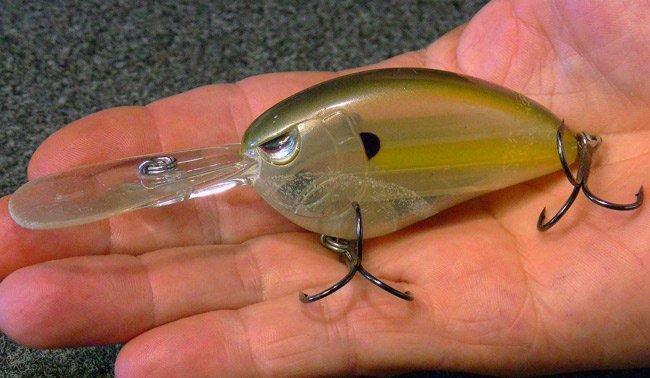Crankbait anglers live for finding rough spots. Gravel bars, shell beds and rocks hold food and are bass magnets. Choosing the proper crankbait to reach the depths where the fish live is crucial.
To find fish you need structure and depth, a food source, and you need timing. Anglers who ledge fish talk about timing all the time. You need to be where the fish are to catch them. An old friend of mine from Tennessee by the name of John Hunt told me “You can’t fish for ghosts”. Simply put that means if there are no fish in the area it’s a 100% guarantee you won’t catch them.
Deep water anglers have to use all the tools. Having the proper crankbait for the depth is essential. I have been throwing the Spro Little John DD a lot and now feel it’s an extension of my hands. This bait casts a mile, is a quiet runner and doesn’t rattle. When you find the line the fish are positioned on having the bait in the “zone” longer will mean more bites.
The designer of the Spro Little John DD, John Crews, agrees.
“A crankbait is the best bait to find and trigger bigger fish to bite,” Crews said. “It’s quicker and you can cover more water with a big crankbait. You also get bigger size fish too. I like to change angles and vibration when they quit to get the school going again. One other thing that I have found is you move the school with a crankbait. I back up the boat as the school moves off the spot towards the boat.”
The Little John will do a 180 when you kill the bait and many strikes occur when you do that. Cranking at high speed followed by a pulling action will also trigger more fish. I particularly like the bill angle of this bait. The line tie moves from side to side which means it wobbles more. The line tie is 18 to 19 millimeters which makes it do that and makes it swim a bit more.
Depth finders are also critical. If you like Lowrance, Structure Scan is the deal. If you are a Humminbird fan Side Imaging is the ticket but rest assured these are not nice-to-have options, they are must-have options for deep water fishing. You are at a major disadvantage without this technology. I rarely look at depth finder view, and for cranking big schools of bass, side finding technology is a must.
Very quickly I can look at a spot, determine where and how the fish are positioned and can tell you if they are catchable, all because of the ability to look to the side. One other advantage this new technology provides is it allows you to expand on an area quickly. Simply by moving the boat you can look ahead, behind and to the right and left. It truly is like your boat is hovering over an empty lake.
One caution, it’s not simple and you won’t be an expert the first time out. It won’t help you catch them either. It will help you find them; then it’s up to your moxie to get them to bite. I only borrow the fish and rarely ever keep one, so it’s my goal to put as many of those green rascals in the boat as possible.
Another piece of technology that going forward I will always have in my boat is a Hydrowave. Many of you reading this probably don’t believe it’s worth it or will question if it really works, but based on my experience, it does have an impact. I have seen things with the Hydrowave in use that I have never seen in my almost 40 years of fishing. Schoolies on a lake where I had never seen them, fish chasing air sandwiches, I’ll relate that later, and some of the biggest stringers of all species I have caught in my life.
I don’t have any reason to sell wolf tickets on this product. It is especially effective on moving baits and it will fire them up. Again it’s not magic, but with a little experience and knowing a little science on the pea-brained adversary we all love, it can make a difference. Being able to know when to let the orchestra play or head bang with heavy metal is the key with the Hydrowave. Bottom line is it works.
One other thing I am finding the more I crankbait is micro-guide cranking rods work better. You can feel the bait better and the rod and line become one. I use a 7-foot Kistler and a 7-foot, 2-inch Duckett Cranking rod for this technique. I am from the school of Rick Clunn on rod selection. I like to hook em’ reel a couple of times and give them a boat ride. I am too old to race around the boat and wear them down. I like getting them in the boat.
Grinding the lips off my deep divers was never one my favorite techniques but with the Spro Little John DD, the right rod and reel and 10 to 12-pound test it is rapidly becoming one of my favorites.
Enjoy the sport for the puzzle part of it. Don’t spot fish and learn your quarry and you will find out fishing is even more fun. As my buddy Jason Sealock always says “you can make a new fisherman out of an old one.”
I love the puzzle.












